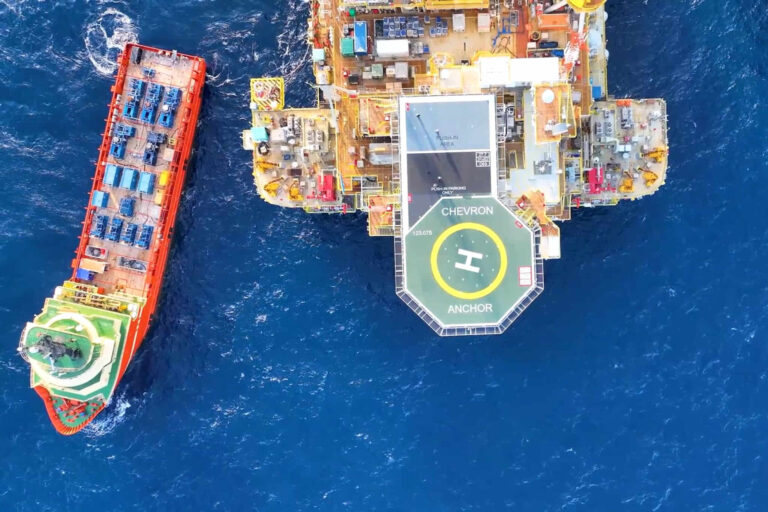The offshore energy arena’s current settings entwine dynamic hydrocarbon and alternative greener plays driven by the security of supply pursuits with strong decarbonization currents to enable the industry players to come
The offshore energy arena’s current settings entwine dynamic hydrocarbon and alternative greener plays driven by the security of supply pursuits with strong decarbonization currents to enable the industry players to come to grips with sustainability targets, paving the way for low-carbon oil, gas, and liquefied natural gas (LNG) production on the road to a clean energy era. The top three fossil energy projects, which came into operation during 2024, reflect the prevailing market trends.

Woodside Energybrought online the first offshore oil deepwater development in Senegal. The cost estimate for the project is said to be within the range of $4.9-$5.2 billion. The Sangomar field, Senegal’s inaugural offshore development, started production in June 2024, deploying MODEC’s FPSO Léopold Sédar Senghor, which was delivered in February 2024.
Woodside secured the FPSO from MODEC in early 2020, followed by an operations and maintenance deal, enabling the Japanese player to stay on as the vessel’s operator. The FPSO, moored permanently at approximately 100 kilometers offshore Senegal at a water depth of around 780 meters, has a production capacity of 100,000 barrels per day and a storage capacity of 1.3 million barrels.
The Sangomar field Phase 1 development entails 23 wells, including 11 production wells, 10 water injection wells, and 2 gas injection wells.
Related Article
-
‘Historic day’ for Woodside: First oil gushes out of Senegal’s inaugural offshore development
Exploration & Production
Cote d’Ivoire’s Baleine story has begun its new chapter after Italy’s Enibegan production a few days ago from the second stage of the oil and gas development, described as the country’s largest discovery and the first net-zero upstream project, considering Scope 1 and 2 emissions, on the African continent.
This achievement lifts production to 60,000 barrels of oil per day and 70 million cubic feet of associated gas, equivalent to 2 million cubic meters. Phase 2 brings Altera Infrastructure’s FPSO Petrojarl Kong and the FSO Yamoussoukro into play to enable the export of oil, with 100% of the processed gas expected to supply the local energy demand through the pipeline built during the project’s Phase 1.
Related Article
-
Africa’s ‘first net zero emission upstream project’ starts its next oil & gas chapter
Exploration & Production
As hydrocarbon exploration activities run in the background to strengthen energy security, a downturn in high-impact average discovery size and a rise in costs permeate the air, with recent discoveries in Namibia’s Orange basinoffering a sliver of hope that more such volumes await, based on the key takeaways from Westwood Global Energy Group’s recent analysis.
One of the countries pursuing more oil and gas resources is Egypt, which intends to drill 586 wells by 2030 to find more hydrocarbon reserves. In addition, the Middle Eastern country is exploring options to ramp up renewable energy development.
While many new projects came online in 2024, among the top highlights showcasing innovation and hammering home the importance of trying out new things and giving technology a chance to improve the state of play has come from Chevron and TotalEnergies, which confirmed the start-up of an oil and gas project in the Gulf of Mexico.
This development is perceived to be the industry’s first high-pressure deepwater development and one of the largest projects in the U.S. energy industry’s history. The Anchor project employs high-pressure 20,000 psi (20K) technology with reservoir depths reaching 34,000 feet below sea level.
“The Anchor project represents a breakthrough for the energy industry. Application of this industry-first deepwater technology allows us to unlock previously difficult-to-access resources and will enable similar deepwater high-pressure developments for the industry,” emphasized Nigel Hearne, Executive Vice President at Chevron Oil, Products & Gas.
Related Article
Meanwhile, Israel’s Navitas Petroleum has delayed a final investment decision (FID) for its Sea Lion oil project in the North Falkland Basin to mid-2025 after costs for Phase 1 increased to $1.4 billion. The total capex for all three phases of the project is estimated to reach $4 billion.
The boost in oil resources of 16% in the overall NFB portfolio was confirmed compared to the previously certified 2C resource.
Content Original Link:
" target="_blank">

























































